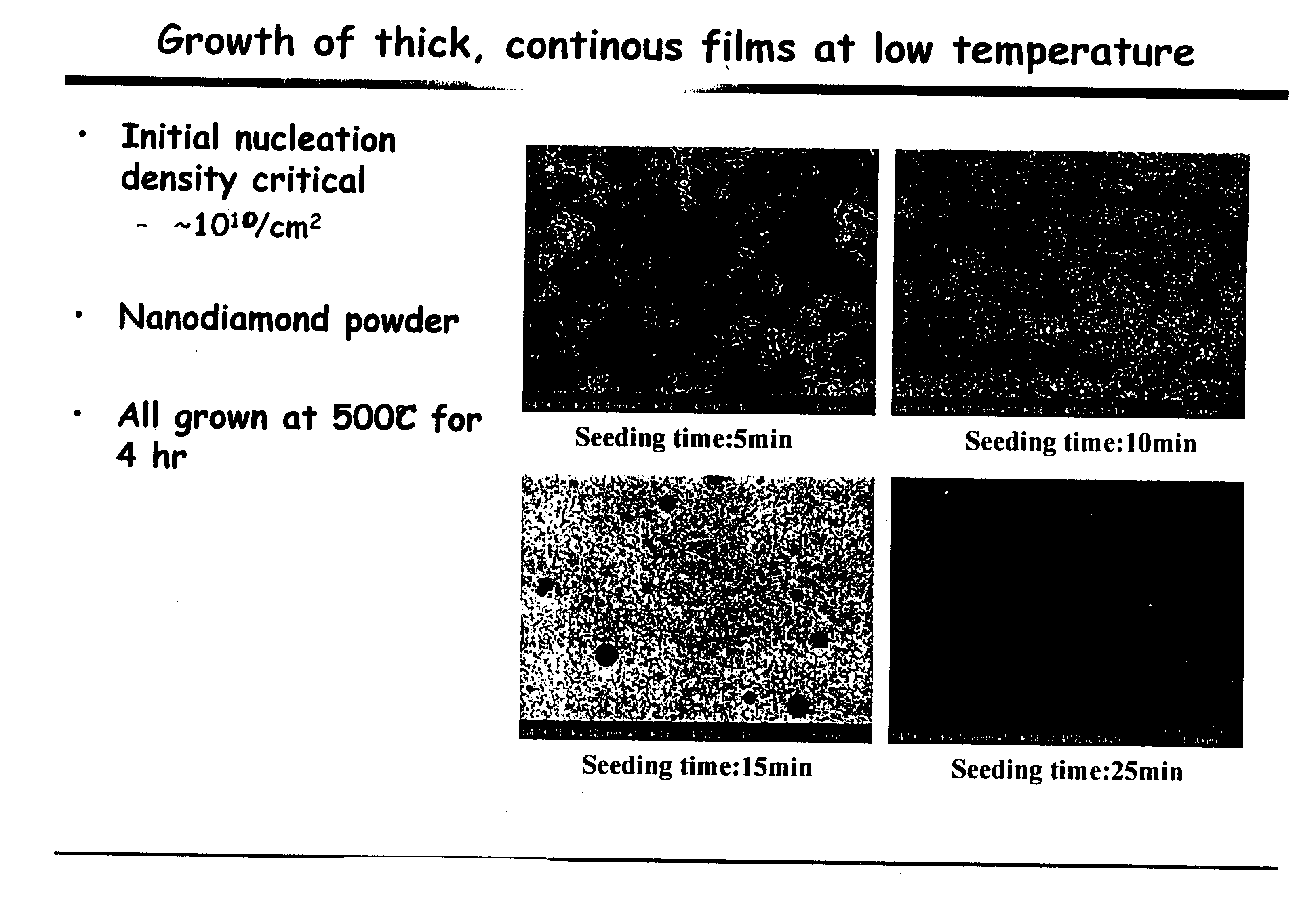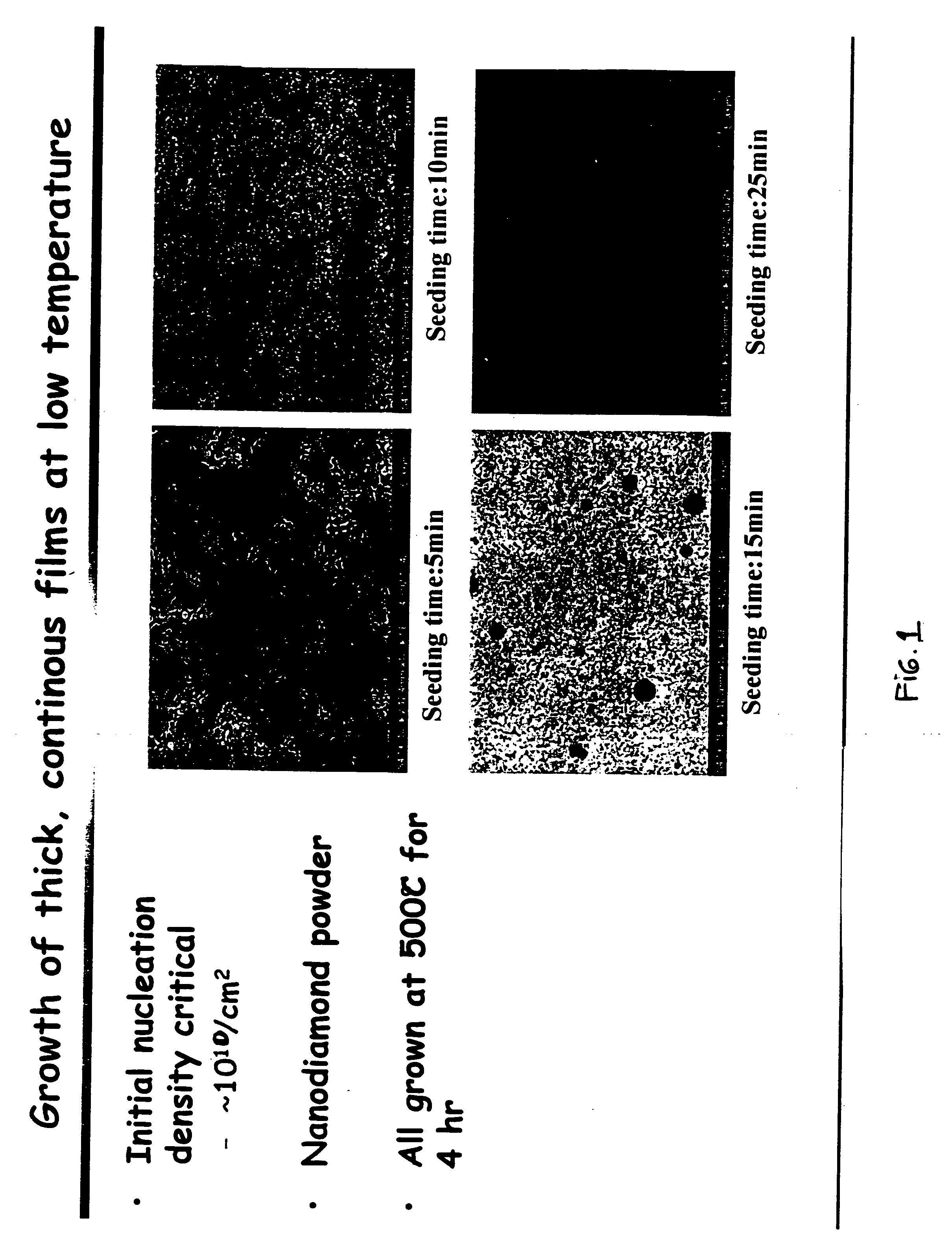Method to grow pure nanocrystalline diamond films at low temperatures and high deposition rates
a technology of pure nanocrystalline diamond and low temperature, which is applied in the direction of coating, transportation and packaging, layered products, etc., can solve the problem that the film is intrinsically inferior to the uncd film, and achieve the effect of high deposition rate and enhanced chemical vapor deposition
- Summary
- Abstract
- Description
- Claims
- Application Information
AI Technical Summary
Benefits of technology
Problems solved by technology
Method used
Image
Examples
Embodiment Construction
[0016] 1. A silicon wafer 100 mm in diameter was cleaned and seeded by immersing the wafer in an ultrasonic bath containing a mixture of nanometer sized diamond powder and an organic solvent (acetone, methanol, etc.). After the ultrasound, the wafer was removed from the bath and rinsed using a combination of organic solvent and distilled wafer. The seeding process was optimized to give the maximum initial areal nucleation density possible, about 1010 sites / cm2 (FIG. 1); however, nucleation areal densities in the range of from about 1010 to 1012 are satisfactory.
[0017] 2. Prior to UNCD deposition, the temperature of the substrate wafer during growth was calibrated through the use of a thermocouple mounted to the surface of a test wafer which was loaded into the microwave plasma chemical vapor deposition system and exposed to the same set of process conditions as would be used to grow a film at low temperatures (FIG. 2). It is not necessary to perform this step every time a low-tempe...
PUM
| Property | Measurement | Unit |
|---|---|---|
| temperature | aaaaa | aaaaa |
| temperature | aaaaa | aaaaa |
| particle size | aaaaa | aaaaa |
Abstract
Description
Claims
Application Information
 Login to View More
Login to View More - R&D
- Intellectual Property
- Life Sciences
- Materials
- Tech Scout
- Unparalleled Data Quality
- Higher Quality Content
- 60% Fewer Hallucinations
Browse by: Latest US Patents, China's latest patents, Technical Efficacy Thesaurus, Application Domain, Technology Topic, Popular Technical Reports.
© 2025 PatSnap. All rights reserved.Legal|Privacy policy|Modern Slavery Act Transparency Statement|Sitemap|About US| Contact US: help@patsnap.com



